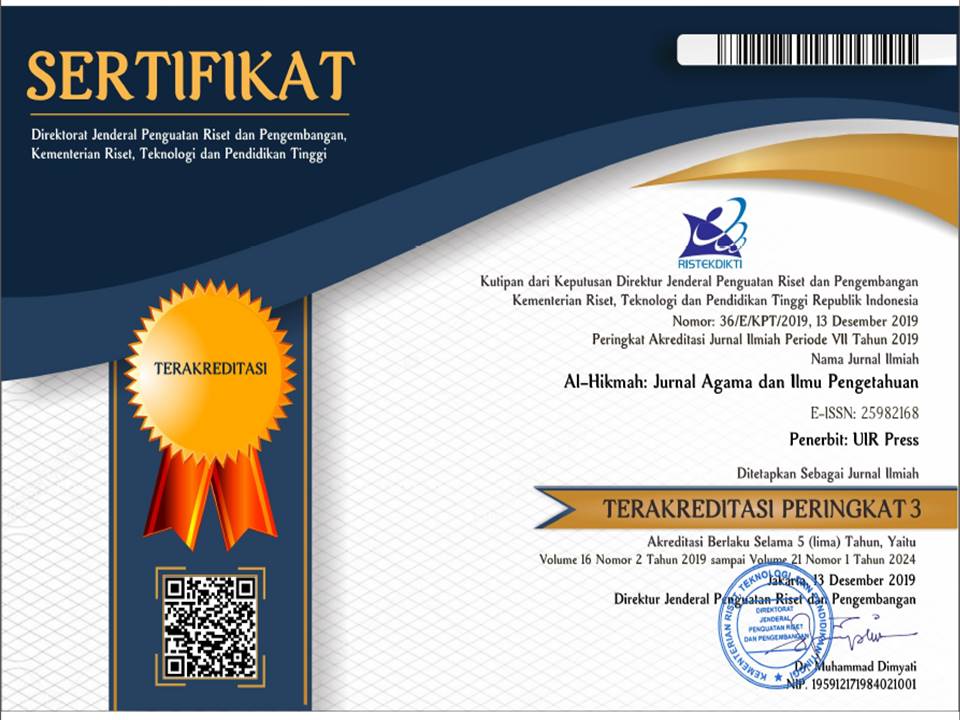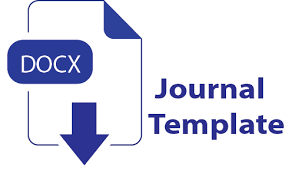GAMBARAN KEPRIBADIAN GELAP (DARK TRIAD PERSONALITY) PADA PENGGUNA MEDIA SOSIAL
DOI:
https://doi.org/10.25299/al-hikmah:jaip.2021.vol18(1).5564Keywords:
Kepribadian gelap, Machiavellianisme, Narsisme, Psikopati, Media SosialAbstract
Nowadays, humans today are inseparable from the sophistication of information and communication technology, all people can enjoy the sophistication of today's technology, be it children, adolescents, adults, and even parents who cannot be separated from technology. In Indonesia, the age range is from 15 years to 24 years and is the largest user. The sampling technique used in this study was purposive sampling. The research subjects were 386 respondents and were active social media users. The measuring instrument used in this study uses an adaptation scale of dark triad personality by Jones and Pauhlus (2014) which consists of 26 items that the authors translate and adapt to the Indonesian culture. The purpose of this study was to describe the dark triad of personality among social media users. A dark personality is a personality that is dominated by negative behavior. The results showed 15.80% had high traits of Machiavellianism, 14.76% had high traits of narcissism, and 15.02% had high traits of psychopathy. Based on the results of the analysis of the mean value of personality factors based on the dark triad personality theory, it can be concluded that in general, the highest mean value is on the trait of Machiavellianism with a mean value of 21.09 and the lowest score lies in the characteristics of psychopathy, namely 11.20. Most social media users are Instagram with a percentage of 95.5% then Instant Massaging (Wa / Line) at 83.8% and Facebook at 53%. The dark personality or dark triad personality is a personality that is dominated by negative behavior so that in the Islamic perspective it is included in the personality of anger, which means that the individual tends to the character of the body and teaches the principle of enjoyment.
Downloads
References
APJII. (2019). Penetrasi & Profil Perilaku Pengguna Internet Indonesia Tahun 2018. Apjii, 51. Retrieved from www.apjii.or.id.
Blair, R. J. R. (2013). The neurobiology of psychopathic traits in youths. Nature Reviews Neuroscience, 14(11), 786–799. https://doi.org/10.1038/nrn3577.
Bohang, F.K (2018). Berapa Jumlah Pengguna Internet Indonesia?", diakses dari: https://tekno.kompas.com/read/2018/02/22/16453177/berapa-jumlah-pengguna-internet indonesia. pada tanggal 10 Juni 2019.
Bathia, M., Rajpoot, M., &Dwivedi, V. (2016). Pattern of internet addiction among adolescent school students of a North Indian city. International Journal of Community Medicine and Public Health, 3(9), 2459-2463.
Cartono. (2018). Komunikasi islam dan interaksi media sosial. ORASI Jurnal Dakwah dan Komunikasi, 9(2). 59-74.
Fuchs, C. (2014). Social Media a Critical Introduction. Los Angeles: SAGE Publication, Ltd.
Goodboy, A. K., & Martin, M. M. (2015). The personality profile of a cyberbully: Examining the Dark Triad. Computers in Human Behavior, 49, 1–4. https://doi.org/10.1016/j.chb.2015.02.052
Gumiandari, S. (2011). Kepribadian manusia dalam perspektif psikologi islam (Telaah kritis atas psikologi modern). Holistik, 12 (01).259-296.
Hasanah, M. (2015). Dinamika kepribadian menurut psikologi islam. Jurnal Ummul Qura 6(2) 110-124. https://doi.org/10.1080/10911359.2015.1059165
Indirwan. (2018). TIPE KEPRIBADIAN REMAJA AKTIF PADA MEDIA SOSIAL (Studi Komparatif Siswa SMA dan MA) SOSIAL (Studi Komparatif Siswa SMA dan MA). 1–109.
Jones, D. N., & Paulhus, D. L. (2014). Introducing the Short Dark Triad (SD3): A Brief Measure of Dark Personality Traits. Assessment, 21(1), 28–41. https://doi.org/10.1177/1073191113514105.
Kircaburun, K., Jonason, P. K., & Griffiths, M. D. (2018). The Dark Tetrad traits and problematic social media use: The mediating role of cyberbullying and cyberstalking. Personality and Individual Differences, 135(June), 264–269. https://doi.org/10.1016/j.paid.2018.07.034
Lyons, M. (2019). The dark triad of personality Narcissism, machiavellianism, and psychopathy in everyday life. Academic Press.
Mulawarman, M., & Nurfitri, A. D. (2017). Perilaku Pengguna Media Sosial beserta Implikasinya Ditinjau dari Perspektif Psikologi Sosial Terapan. Buletin Psikologi, 25(1), 36–44. https://doi.org/10.22146/buletinpsikologi.22759
O’Boyle, E. H., Forsyth, D. R., Banks, G. C., & McDaniel, M. A. (2012). A meta-analysis of the Dark Triad and work behavior: A social exchange perspective. Journal of Applied Psychology, 97(3), 557–579. https://doi.org/10.1037/a0025679.
Preotiuc-Pietro, D., Carpenter, J., Giorgi, S., & Ungar, L. (2016). Studying the Dark Triad of Personality through Twitter Behavior. Proceedings of the 25th ACM International on Conference on Information and Knowledge Management - CIKM ’16. doi:10.1145/2983323.2983
Quarshie, H. O., Mis, M. B. A., & Cyber, P. G. (2012). The Impact of Computer Technology on the Development of Children in Ghana. 3(5), 717–722.
Ramsay, M. (2012). Machiavellianism. Encyclopedia of Applied Ethics, (1991), 1–9. https://doi.org/10.1016/B978-0-12-373932-2.00270-2
Reed, K. P., Cooper, R. L., Nugent, W. R., & Russell, K. (2016). Cyberbullying: A literature review of its relationship to adolescent depression and current intervention strategies. Journal of Human Behavior in the Social Environment, 26(1), 37–45. https://doi.org/10.1080/10911359.2015.1059165
Spain, S. M., Harms, P., & Lebreton, J. M. (2014). The dark side of personality at work. Journal of Organizational Behavior, 35(SUPPL.1). https://doi.org/10.1002/job.1894
van Geel, M., Toprak, F., Goemans, A., Zwaanswijk, W., & Vedder, P. (2017). Are Youth Psychopathic Traits Related to Bullying? Meta-analyses on Callous-Unemotional Traits, Narcissism, and Impulsivity. Child Psychiatry and Human Development, 48(5), 768–777. https://doi.org/10.1007/s10578-016-0701-0
Vander Molen, R. J., Kaplan, S., Choi, E., & Montoya, D. (2018). Judgments of the Dark Triad based on Facebook profiles. Journal of Research in Personality, 73(November), 150–163. https://doi.org/10.1016/j.jrp.2017.11.010
Wright, M. F., Huang, Z., Wachs, S., Aoyama, I., Kamble, S., Soudi, S., Shu, C. (2020). Associations between cyberbullying perpetration and the dark triad of personality traits: the moderating effect of country of origin and gender. Asia Pacific Journal of Social Work and Development, 00(00), 1–15. https://doi.org/10.1080/02185385.2020.1788979







